Inscription tout public
Catalogue général de formations
Modules disponibles
Do you have specific needs for yourself, your organisation, your employees or your co-owners?
Do you want us to create a specific training module for you, or are you interested in participating in one of our existing modules?
Contact us as soon as possible!
We will discover the best way to adapt to your needs and find a date on the calendar.
Practical application
- La formation se donne en forêt, généralement sur un dispositif dédié
- Horaire : de 9h à 16h, ou de 9h à 13h pour les demi journées
- Une brochure de 16 à 20 pages reprenant la théorie de la formation est distribuée à chaque participant (sauf exception)
Matériel à apporter : - De quoi prendre note
- Pour la formation GHD : vos outils de mesures
- Repas tiré du sac pour les journées entières
Paiement en ligne au moment de l’inscription.
Lieu de rendez-vous précis envoyé aux participants quelques jours avant la formation.
Programme tout public 2025-2026
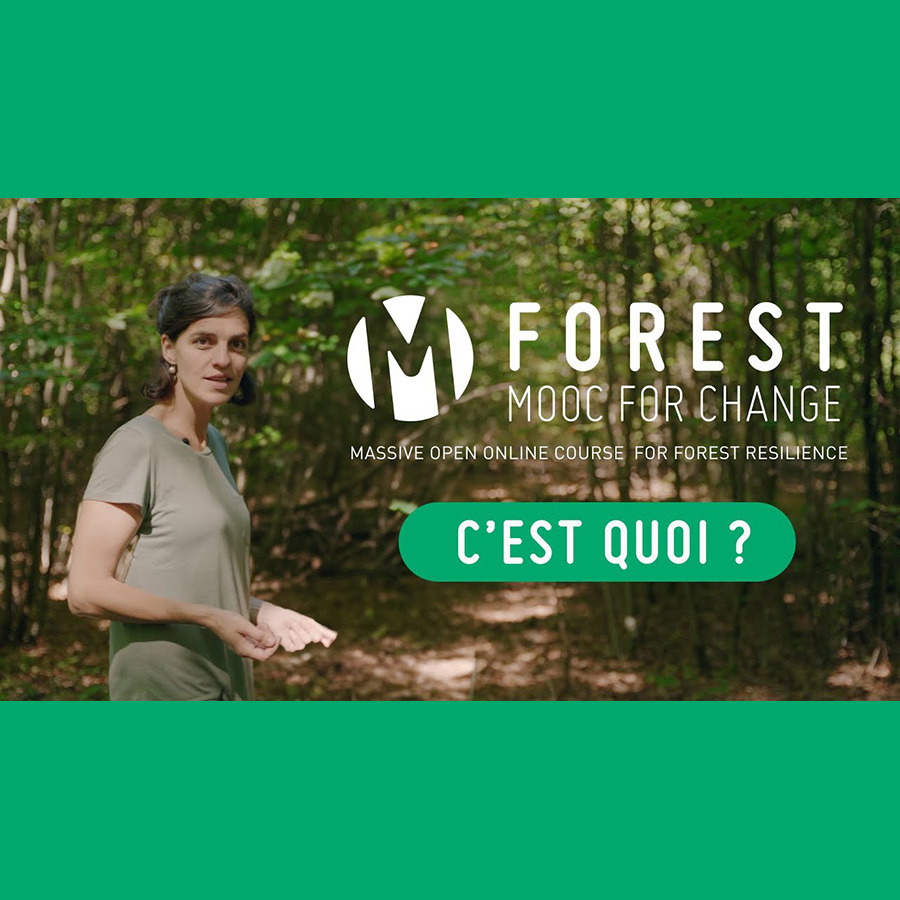
ForestMoocForChange
Date : 15/10/2025 au 15/01/2026
Lieu : en ligne
Durée : 8 semaines – Prix : gratuit
Programme
Le premier cours en ligne gratuit sur la sylviculture mélangée à couvert continu, disponible en trois langues.
Objectives
Améliorer le niveau d’information, de connaissances et de compétences des gestionnaires et propriétaires forestiers en matière de SMCC afin d’impacter les pratiques au bénéfice d’une gestion adaptée face aux enjeux des changements climatiques.
Method
• Cours en ligne (Mooc) de 8 semaines
• Quizz final donnant lieu à un certificat de réussite

Gestion de la lumière, parcours surface terrière et outils - LUMG
Date : 1/10/2025 – Lieu : Fleurus
Durée : 1 jour – Prix : 70 €
Programme
It is not enough to consider the (optimal) basal area alone when determining the light availability conducive to the renewal of a plot. The simple measurement of the basal area in its current state is insufficient to reliably represent the light environment. In addition to this measurement, detailed observation of the existing stand must be carried out (horizontal and vertical structure, forest cover ratio, etc.) in order to interpret the forest stand trajectory and to achieve the desired objectives, such as the regeneration of a stand.
Objectives
Maîtriser la prise de mesure de surface terrière dans différents contextes (essences, structure). Combiner outils et observations : coefficient de couvert, structures forestières, caractéristiquesessences, historique du peuplement, etc. Savoir interpréter la trajectoire du peuplement en fonction des actes de gestion posés ainsi que la durée d’une éventuelle phase de transition
Method
Different stands are selected to represent the main forest contexts present in Wallonia. Participants are taken to different plots with varied forest structures. Despite having similar basal areas, the silvicultural trajectories of stands and stages of transition can differ significantly.
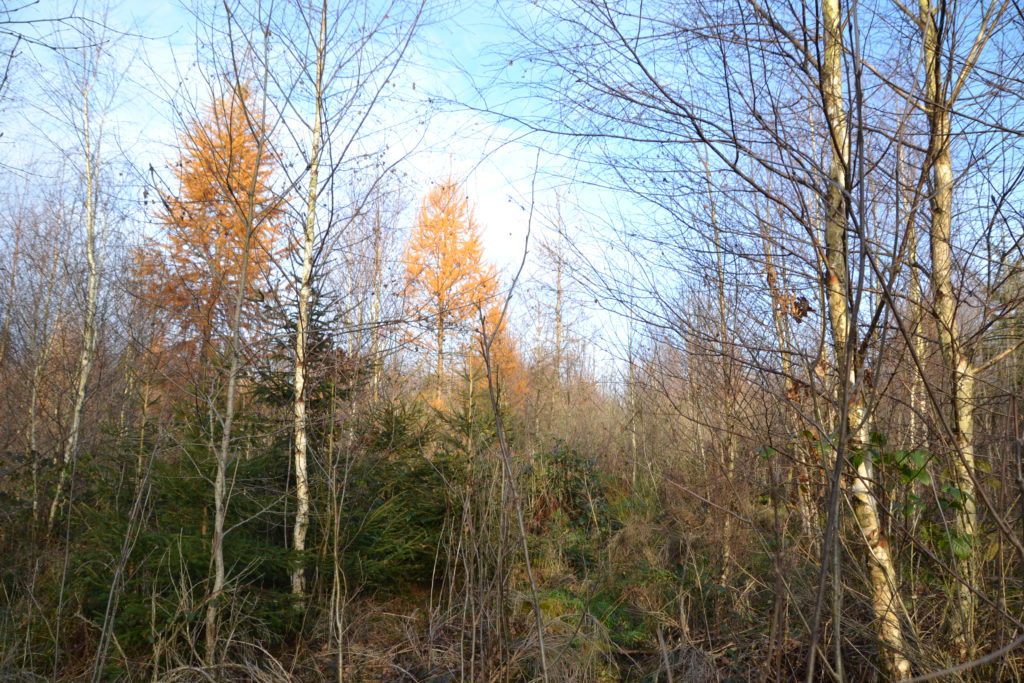
Sylviculture du bouleau - BOU
Date : 2/10/2025 – Lieu : Nassogne
Durée : 1 jour – Prix : 70 €
Programme
Birch is a species widely present in the forests of Europe. However, it receives little attention from a forestry point of view due to the low quality of the current logs produced and its low value locally. It nevertheless presents major advantages for both the ecosystem and the wood industry. In fact, it can live in a wide range of station conditions and can be put to a variety of uses.
To produce quality wood that can be used for purposes other than firewood, it is essential to take the tree’s requirements into account and apply rigorous silviculture, at the right time and with the right intensity.
Objectives
• To know the requirements of birch
• To be able to select future birches at the right time
• To know the limits of formative and regular pruning of birch
• To recognise the main defects in logs
• To carry out silviculture aimed at the production of quality wood in different situations
Method
• Visit involving a training tool for thinning
• Study of exemplary stands
• Exercises involving selection and thinning within stands

Lisièroscope : installation et gestion de la lisière - LISO-A
Date : 13/10/2025 – Lieu : Nassogne
Durée : 1 jour – Prix : 70 €
Programme
When properly managed, the edges, transitional environments between the forest and open spaces, are true oases of life welcoming a large number of species. They bring many benefits: an increase in biodiversity, protection of stands against sunburn and wind turbulence, as well as the creation of a more diverse landscape.
Lors de cette formation, chacun pourra s’exercer à un martelage fictif en faveur d’une lisière structurée et diversifiée sur un lisièroscope.
The lisieroscope is an exercise area which allows the intensity and character of each tree marker’s harvesting practice to be analysed according to different criteria. It consists of an area of just over one hectare set up on the outer edge, where all the trees are numbered and mapped. The variables taken from each inventoried tree are: species, circumference, presence of dendromicrohabitats, ecological value of the trees, economical quality, as well as various observations (narrow crown area, health status, pillar tree, etc.).
Objectives
Connaître les différentes méthodes d’aménagement et d’entretien de lisières forestières structurées et mélangées. Connaître les avantages d’une lisière structurée et mélangée. Concevoir la réalisation technique : planification, choix des sites à aménager, choix des méthodes d’installation et d’entretien. S’exercer au martelage en faveur d’une lisière structurée et diversifiée.
Method
Réalisation d’un exercice de martelage d’une lisière sur un lisièroscope Analyse des résultats selon les aspects écologique, sylvicole, paysager, économique. L’analyse se fait à l’aide d’un logiciel et est suivie d’une mise en situation sur le terrain. Discussion autour des techniques, des éventuels obstacles, etc.
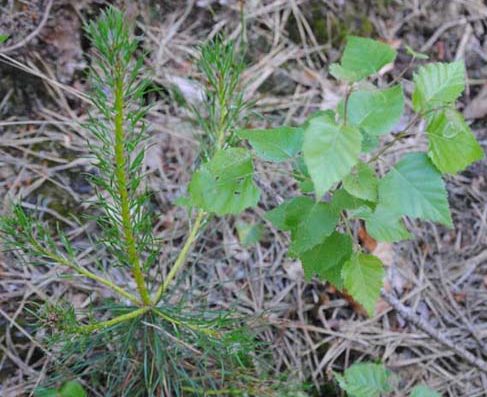
Gestion du mélange au stade juvénile - MEJU
Date : 14/10/2025 – Lieu : Vencimont
Durée : 1 jour – Prix : 70 €
Programme
This training course will cover both the set up of a mixed stand (starting from bare soil or a monospecific or “paucispecific” matrix) and the management of the juvenile mixture created. The primary objective is the reconstitution of plots in crisis. In a context where it is recognized that mixed stands are more resistant and resilient, this training course aims to guide the choice of managers (diagnosis of the situation, choice of mixtures, techniques for set up, type and frequency of maintenance, etc.) for greater ecological and economical performance.
Objectives
Prise en main de l’éventail pour faire des choix avisés quant au choix de mélange d’essences et/ou diagnostic d’une régénération mélangée. Passage en revue des outils d’aide à la décision pour les choix de mélange Choisir le mélange selon les connaissances biologiques, autécologiques, synécologiques et stationnelles Déterminer les besoins de suivi pour maintenir ce mélange (rotation travaux, type d’intervention, etc.)
Method
Les participants seront invités sur différentes stations impliquant des mélanges d’essences différents. La journée sera organisée autour de parcelles à planter et de jeunes mélanges existants. Dans un cas, les participants devront identifier le mélange recherché selon la station et les réalités climatiques, définir son implantation et enfin planifier le suivi de ces parcelles. Dans l’autre, ils devront définir si le peuplement est en équilibre stable ou instable, prioriser les actions à mener pour orienter le mélange.
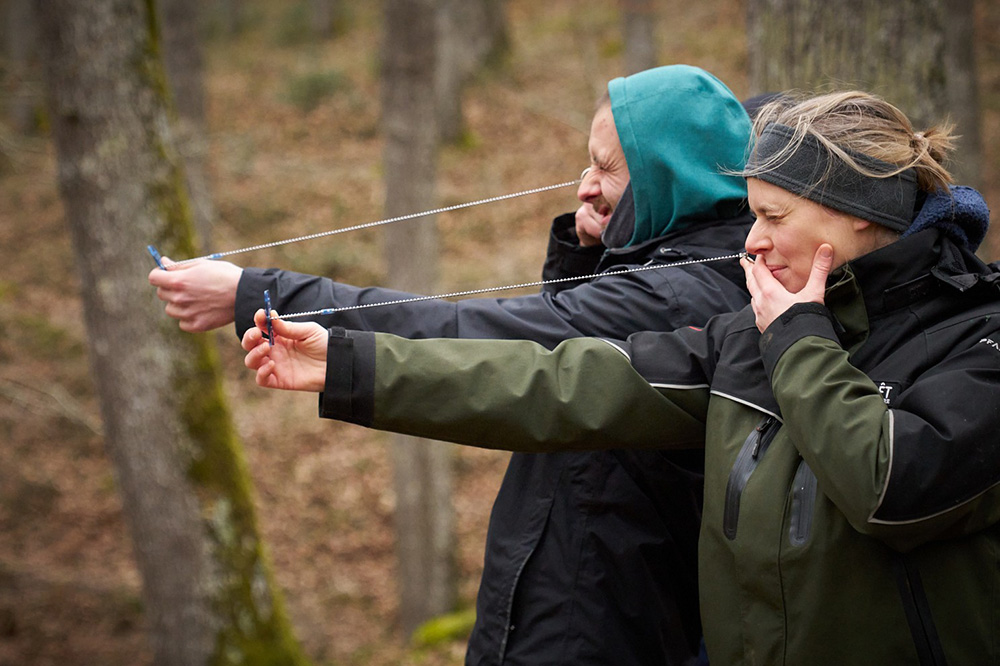
Mesure de la surface terrière et de la hauteur dominante - GHD
Date : 7/11/2025 – Lieu : Marche-en-Famenne
Durée : 1/2 jour – Prix : 50 €
Programme
La formation a pour but de présenter les notions et l’intérêt de la mesure de la surface terrière et de la hauteur dominante. Les différents instruments de mesure seront présentés et testés sur le terrain.
Objectives
• Définir la notion et l’intérêt de la mesure de la surface terrière et de la hauteur dominante.
• Prendre des mesures de surface terrière et de hauteur dominante sur le terrain.
• Aborder les limites des instruments de mesure utilisés.
Method
• Courte présentation pratique des deux notions abordées.
• Exercice de mesures dans des peuplements.

fichierecologique.be – 1. Concepts et fondements de l’outil - FEE1
Date : 28/11/2025 – Lieu : Marche-en-Famenne
Durée : 1/2 jour – Prix : 50 €
Programme
For several decades now, forest stands have faced a number of extreme events, both climatic and biotic. Consequently, species-station suitability is essential to ensure the resilience of forests, and establishing each species in its habitat is a major challenge for foresters.
This half-day spent using fichierecologique.be aims to inform users about this tool so that they can use it to the best of its potential. There are also some review activities such as reading and interpreting the soil map of Wallonia. Finally, some practical exercises help illustrate the theoretical concepts.
Objectives
• To understand how to use fichierecologique.be to its full potential.
• To read and interpret the soil map of Wallonia.
• To understand the concepts of autecology of species.
• To recognise the main characteristics of the species.
Method
• Presentation of the fichierecologique.be tool
• Présentation de la carte des sols de Wallonie et de sa légende.
• Exercices appliqués sur les principaux types de sol.
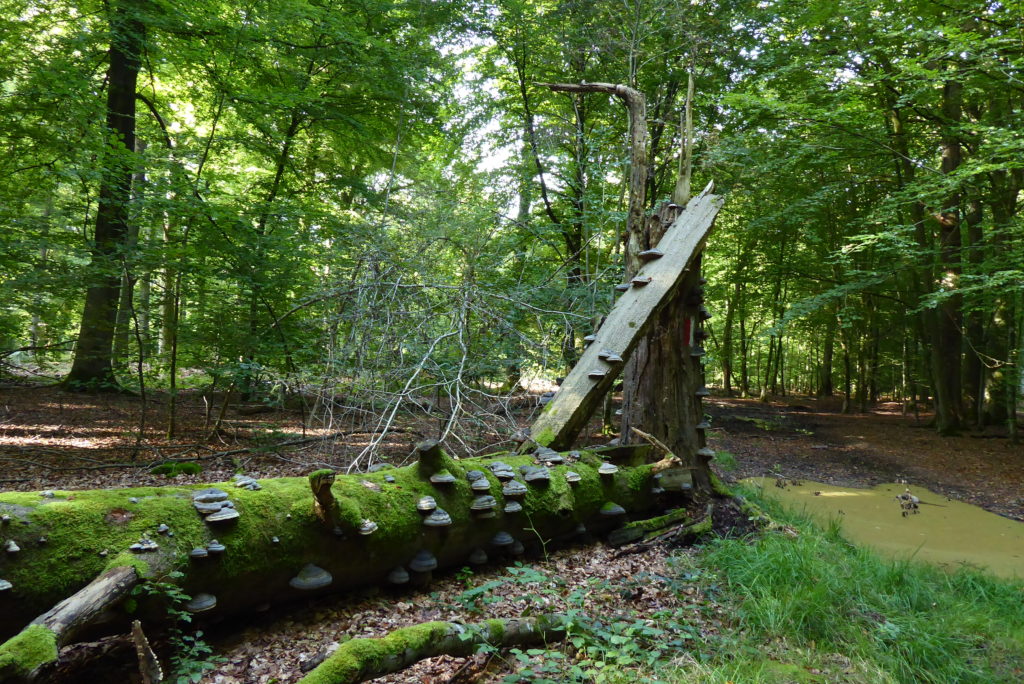
Bois mort et dendromicrohabitats - DMH
Date : décembre 2025 (date précise à venir)
Lieu : Ardenne
Durée : 1 jour – Prix : 70 €
Programme
Dead wood, rich in biodiversity, has long been eliminated from the forest out of fear and ignorance of its role in the forest ecosystem. By the commonly used term “dead wood” we mean the notion of “decaying wood”. This term does not apply to completely dead trees; it refers to all forms of decaying wood, existing as part of a living or dead tree standing or on the ground.
Maintaining a significant amount of dead wood in the forest, in all its forms and stages of decomposition, plays a key role in the economical production of sustainable and durable wood, in balance with a functional forest ecosystem.
Objectives
Améliorer la compréhension de la notion de « bois mort ». Comprendre les rôles du bois mort en forêt dans un écosystème forestier fonctionnel. Connaître et comprendre en quelques chiffres les seuils minimums nécessaires en bois mort. Mise en place d’itinéraires sylvicoles à différentes échelles géographiques. Identifier les actions-clés permettant d’augmenter rapidement la présence de bois mort en forêt.
Method
Exercice de reconnaissance et d’identification des stades de décomposition. Exercice de reconnaissance et d’identifications des dendromicrohabitats. Réalisation d’un diagnostic d’état des lieux d’un peuplement. Identification des itinéraires sylvicoles les plus opportuns. Étude de peuplements exemplatifs.

fichierecologique.be – 1. Concepts et fondements de l’outil - FEE1
Date : 28/11/2025
Lieu : Marche-en-Famenne
Durée : 1/2 DAY
Programme
For several decades now, forest stands have faced a number of extreme events, both climatic and biotic. Consequently, species-station suitability is essential to ensure the resilience of forests, and establishing each species in its habitat is a major challenge for foresters.
This half-day spent using fichierecologique.be aims to inform users about this tool so that they can use it to the best of its potential. There are also some review activities such as reading and interpreting the soil map of Wallonia. Finally, some practical exercises help illustrate the theoretical concepts.
Objectives
• To understand how to use fichierecologique.be to its full potential.
• To read and interpret the soil map of Wallonia.
• To understand the concepts of autecology of species.
• To recognise the main characteristics of the species.
Method
• Presentation of the fichierecologique.be tool
• Présentation de la carte des sols de Wallonie et de sa légende.
• Exercices appliqués sur les principaux types de sol.
